Environment & sustainability
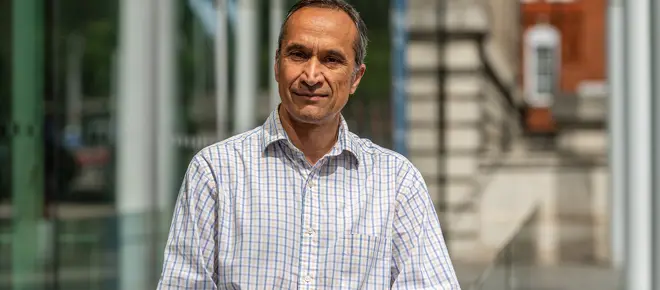
- Chemical
- Environment & sustainability
- Profiles
- Issue 103
Processing the bigger picture
Professor Nilay Shah OBE FREng has seen huge changes in the processing industry since he started his career in chemical engineering, from the decline of the traditional petrochemicals industry as a major collaborator, to a growing interest in reducing emissions and the rise of information technology.
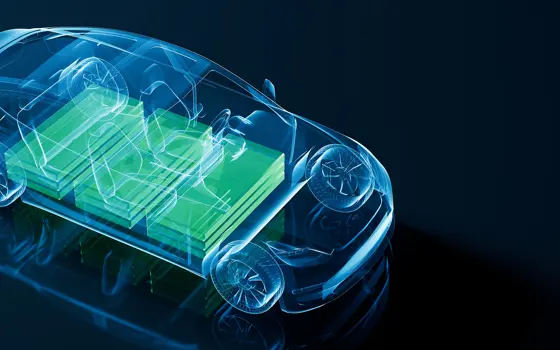
- Transport
- Environment & sustainability
- Issue 103
A solid future for electric vehicles
Switching to an electric vehicle is an action that more and more people are taking to curb their carbon emissions. However, the use of lithium-ion batteries does pose issues for drivers, such as their increased weight and range anxiety. But these could be solved by solid-state batteries.

- Environment & sustainability
- Design & manufacturing
- Issue 103
Treating wastewater more sustainably
Towns across the UK are growing. Building more houses inevitably means more sewage and wastewater. Innovative collaborative working and an environmentally friendly treatment technology has delivered Scotland’s lowest carbon new wastewater treatment works.
Quick read

- Environment & sustainability
- Software & computer science
- Innovation Watch
Better batteries, crunchier biscuits: prize-winning startup Polaron solves material problems
When three Imperial College researchers set out to develop AI tools for making better batteries, they probably didn’t expect that the same tools might one day help fine-tune the texture of Oreos.

- Environment & sustainability
- Materials
- Issue 102
Concrete foundations for net zero
If concrete were a country, it would be the third largest emitter of CO₂ after the US and China. The race is on to slash its emissions. Swapping out its most polluting ingredients, locking in carbon, and upcycling our industrial and construction waste could hold the key, says Leonie Mercedes.
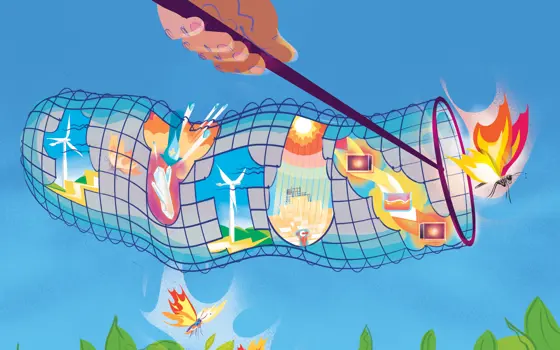
- Environment & sustainability
- Materials
- Issue 102
Taking the heat out of climate change
When we think of storing energy, we usually think of batteries. But with a huge slice of global carbon emissions resulting from producing heat, engineers are developing ways to store this critical resource with the hopes of driving us closer to net zero, writes Stuart Nathan.

- Environment & sustainability
- Civil & structural
- Issue 67
An introduction to the 'real world'
Graduates can emerge from university with little face-to-face contact with engineers who have worked in industry. To counter this shortcoming, leading engineers are going back to university as Royal Academy of Engineering Visiting Professors to give undergraduates a frontline view of engineering.
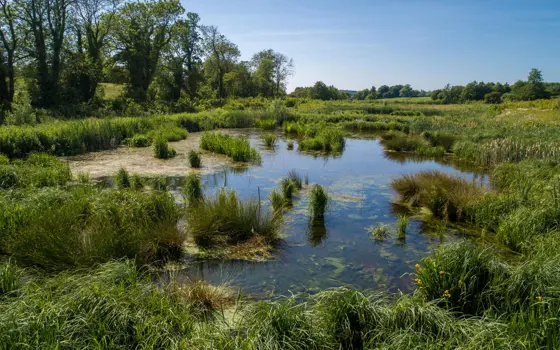
- Environment & sustainability
- Issue 101
Water treatment turns to nature
New regulations on river pollution and biodiversity, along with a need to move towards net zero, have prompted water treatment engineers to build wetlands where plants and microorganisms filter out pollutants, leaving water clean enough to flow into rivers without doing any damage. Michael Kenward OBE looks into how they are being deployed across the UK.
Quick read

- Environment & sustainability
- Energy
- Opinion
- Issue 101
How can we accelerate decarbonisation of our electricity system?
Since taking office in July, the government has been developing its plans to accelerate the decarbonisation of our electricity system, a crucial step on the road to net zero. The scale of this challenge is immense and rapid action is needed to achieve it.
Quick read

- Environment & sustainability
- Civil & structural
- Innovation Watch
- Issue 101
How punching holes in pavements could prevent flash flooding
Climate change is raising the risk of flash flooding in cities around the world. Could rethinking our impervious roads and pavements stop sewers from becoming overwhelmed?

- Environment & sustainability
- Software & computer science
- Issue 101
AI shakes up the world of weather forecasting
It has been a banner year for the UK’s AI powerhouse, Google DeepMind. Beverley D’Silva reports on how the company’s award-winning weather forecasting technology is transforming meteorology and beyond.
Quick read

- Environment & sustainability
- Issue 101
How can Santa be more environmentally friendly?
Santa rides his sleigh with his reindeer around the world delivering gifts every Christmas Eve. Before Christmas, he rides steam trains. Chau-Jean Lin investigates the sustainability of his various modes of transport.
Quick read

- Environment & sustainability
- How I got here
How I started my entrepreneurial journey while still at school
At age 14, a walk to school planted the seeds of an engineering innovation in Ava Garside’s head. Now 16, Ava is the CEO of a graphene and geospatial tech startup that aims to help people protect their health from air pollution. Here, she talks about her journey so far.
Quick read

- Environment & sustainability
- Design & manufacturing
- Opinion
- Issue 100
The art and science of engineering with living things
Christopher Bellamy trained as an engineer at the University of Cambridge and worked for Jaguar Land Rover and Salomon. Now, he's a biodesigner working with living things to create materials that make us feel closer to nature.
Quick read

- Civil & structural
- Environment & sustainability
- Opinion
- Issue 100
How can we reimagine building performance?
The built environment – and what we need from it – plays a large role in everybody’s lives. But how do we measure its performance, especially in the face of pressing challenges such as the climate crisis? Here, Fiona Cousins, President of CIBSE (the Chartered Institution of Building Services Engineers), shares the key points from her presidential address looking at how we reframe the idea of building performance.
Quick read

- Design & manufacturing
- Environment & sustainability
- Innovation Watch
- Issue 100
The engineers turning surplus feathers into packaging
London-based startup Aeropowder is turning surplus feathers into a biodegradable thermal packaging material, designed to keep items such as medicines or vaccines insulated and cold during transport.
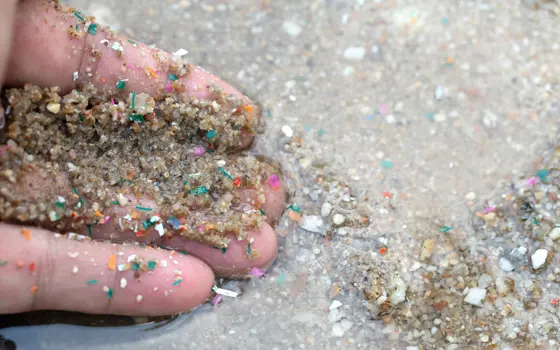
- Environment & sustainability
- Materials
- Issue 99
How engineers are fighting microplastic pollution
From the deepest reaches of the sea to the innermost tissues of our bodies, humans have found microplastics everywhere we’ve looked for them. Now, engineers are trying to stop microplastics from getting into our water systems and the environment.

- Materials
- Environment & sustainability
- Issue 98
Mining volcanoes for metals
Green technologies depend on a range of metals and minerals. With concerns about environmental damage from conventional mining, scientists and engineers are seeking alternative sources. Could metal-rich magmatic brines underneath volcanoes have the answer?
Quick read
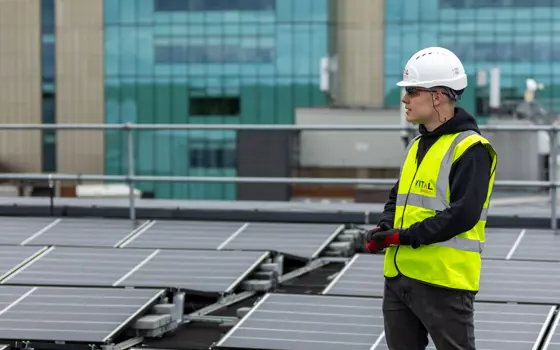
- Environment & sustainability
- How I got here
Q&A: Harvey Hudson, building services engineering apprentice
Family inspiration and diagnosing problems on his mountain bike set Harvey Hudson on the engineering apprenticeship route. He was since named the National Apprentice of the Year and featured in the Royal Academy of Engineering’s ‘This is Engineering’ campaign.
Quick read

- Software & computer science
- Environment & sustainability
- How I got here
Q&A: Meng Wu, PhD student in data science
Having studied computer science and AI at university, Meng Wu has applied his skills in a wide range of fields. He’s now a PhD student based in Orkney, applying software and data engineering to help local fishing communities become more sustainable.

- Environment & sustainability
- Profiles
- Issue 97
A champion of the green economy
Professor Simon Pollard OBE FREng’s confidence in the idea of a circular economy began when he set out to turn harmful waste into useful materials. His career as an environmental engineer has encompassed many aspects of the waste and water utility sectors.
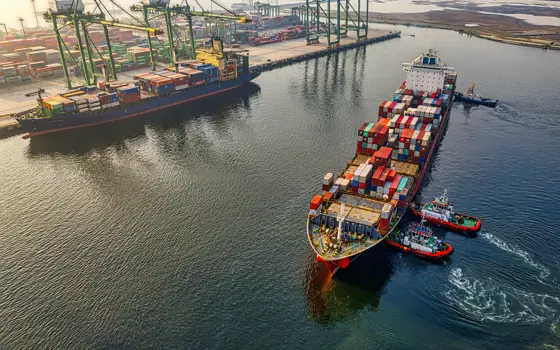
- Maritime & naval
- Environment & sustainability
- Issue 97
Decarbonising the shipping industry
About 90% of traded goods are transported on the world’s oceans, with total trade volumes likely to triple by 2050, however, shipping is currently reliant on fossil fuels. Leonie Mercedes explores the different possibilities for a green future for the industry.
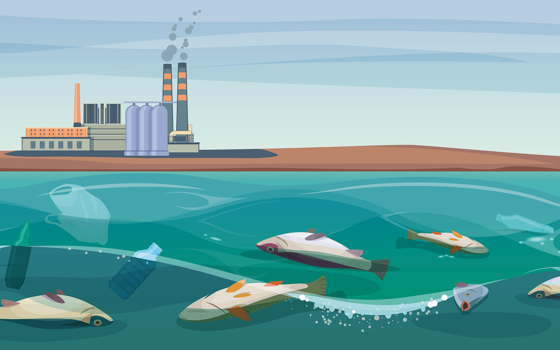
- Chemical
- Environment & sustainability
- Issue 97
How to remediate forever chemicals
Used to manufacture iPhone chips, waterproof trousers and many more everyday items, forever chemicals have been implicated in a worrying range of health conditions. Beverley D’Silva explores the technologies engineers are developing to safely capture and destroy forever chemicals for good.
Quick read

- Design & manufacturing
- Environment & sustainability
- Profiles
Q&A: Deborah Meaden
Ahead of this year’s National Engineering Day, green Dragon, Deborah Meaden emerged from the Dragon’s Den to share a few secrets of success with Ingenia.
Quick read

- Energy
- Environment & sustainability
- Electricals & electronics
- How I got here
Q&A: Mark Goudie, electrical engineer
Mark Goudie is one of the youngest engineering Fellows in the UK, an inventor, and an engineer in the energy sector.
Quick read

- Civil & structural
- Environment & sustainability
- Opinion
- Issue 95
Building a greener future
Will Arnold, Head of Climate Action at the IStructE, says we need a total rethink of how we create, maintain and power our buildings to better protect our planet.

- Design & manufacturing
- Environment & sustainability
- Issue 95
Turning jeans green
The engineering behind the trusty wardrobe staple, and how new technologies are attempting to lessen their well-documented environmental burden.
Quick read

- Energy
- Environment & sustainability
- Chemical
- How does that work?
- Issue 96
How do electrolysers work?
Electrolysers are a critical net zero technology used to produce green hydrogen.
Quick read

- Environment & sustainability
- Energy
- Innovation Watch
- Issue 96
The clean energy pioneers
Ceres Power have found a way to make green hydrogen – thought to be an essential part of our energy transition – at scale.

- Environment & sustainability
- Civil & structural
- Issue 96
Protecting the UK’s coasts
Settlements on the UK’s coastlines are increasingly at risk of being lost to erosion. How can different engineering approaches protect them?

- Environment & sustainability
- Issue 95
How do we pay for net zero technologies?
Engineering holds an abundance of answers to our decarbonisation problems. But how do we finance it all? Find out in our demystifier.

- Civil & structural
- Environment & sustainability
- Issue 95
Building with fungi
Materials made from mycelium, the hair-like threads that sustain all fungi, are now finding uses in construction.

- Design & manufacturing
- Chemical
- Environment & sustainability
- Materials
- Innovation Watch
Kicking single-use plastics to the curb
This spider-silk inspired plastic alternative produces no plastic alternatives – unlike existing "compostable" plastics.

- Environment & sustainability
- Maritime & naval
- Issue 94
How artificial reefs boost biodiversity
Coral reefs and coastlines face growing challenges from climate change. Two UK startups are developing artificial reefs that protect and renew marine ecosystems.
Quick read

- Chemical
- Environment & sustainability
- How I got here
- Issue 94
Q&A: Isabelle Pickett, chemical engineering student
A chemical engineering degree set Isabelle Pickett on a path to advocating for girls in STEM and net zero careers – and setting up her own tutoring business along the way.

- Electricals & electronics
- Environment & sustainability
- Materials
- Issue 94
Powering the pursuit of net zero
It's electrifying: what’s needed before emerging battery technologies are fully charged for a clean green future?
Quick read

- Chemical
- Energy
- Environment & sustainability
Why safety engineering is key for green hydrogen and net zero
When engineering goes wrong, it makes the headlines. Thankfully, there’s a whole field dedicated to making sure it goes right: safety engineering.
Quick read

- Environment & sustainability
- Opinion
A young engineer’s perspective on the good, the bad and the ugly of COP27
Engineering Leaders Scholar Isabelle Pickett attended COP27. She wrote about some of her takeaways for Ingenia, including important actions for the future that engineers can take.
Quick read

- Energy
- Environment & sustainability
- How I got here
- Issue 93
Q&A: Katie Ireland
On coming back from a career break, Katie Ireland switched fields from oil and gas to renewables, and was awarded ‘Returner of the Year’ at the 2022 Engineering Talent Awards.
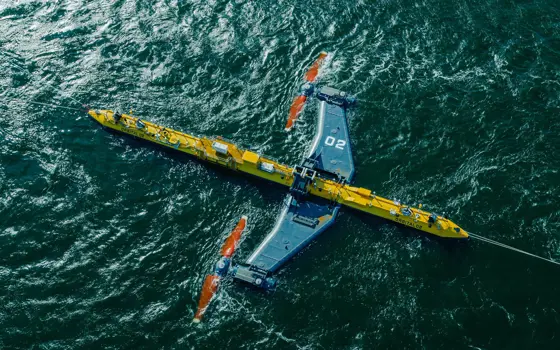
- Energy
- Environment & sustainability
- Issue 93
Making sure tidal power blades are fit for purpose
For tidal power to become a renewable energy source, engineers need to be able to test the components that will have to operate in the severe offshore conditions around the British Isles. FastBlade is a new facility that can help with this.
Quick read

- Environment & sustainability
- Materials
- Innovation Watch
- Issue 92
Imaging the plastic recycling process
Chemical engineer Dr Kit Windows-Yule is using an innovative imaging technique to improve the chemical process of breaking plastics down into oil.
Quick read

- Environment & sustainability
- Civil & structural
- Opinion
- Issue 92
How do we make the UK more resilient to flooding?
Extreme flooding is becoming a regular occurrence across the UK, with flash floods causing significant damage to homes and businesses.

- Design & manufacturing
- Environment & sustainability
- Issue 91
Breathing new life into wind turbine blades
For years, the world’s blade-makers have been looking to save composite decommissioned blades from landfill but significant progress has been made in the breakthrough development of RecyclableBlades, which has found a way to repurpose retired blades.

- Civil & structural
- Environment & sustainability
- Issue 91
Engineering biodiversity
If engineers planning, designing or implementing new infrastructure works are not familiar with natural capital and biodiversity net gain, they will have to learn fast. Under the Environment Act, new developments are required to demonstrate ‘biodiversity net gain’, requiring important changes to the way engineers work.
Quick read
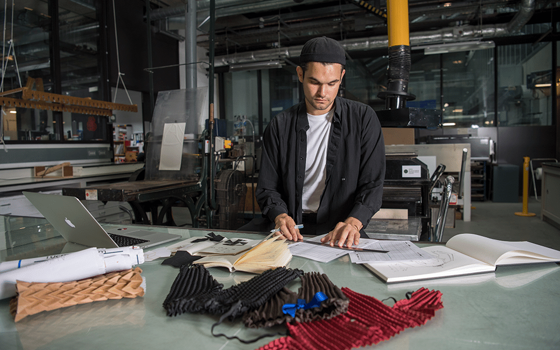
- Environment & sustainability
- Arts & culture
- Innovation Watch
- Issue 91
Clothes that grow with children
By the time they reach the age of two, babies go through seven clothing sizes, only adding to the fashion industry’s impact on the planet. London-based Petit Pli is on a mission to lessen the burden, with childrenswear that grows with the wearer.
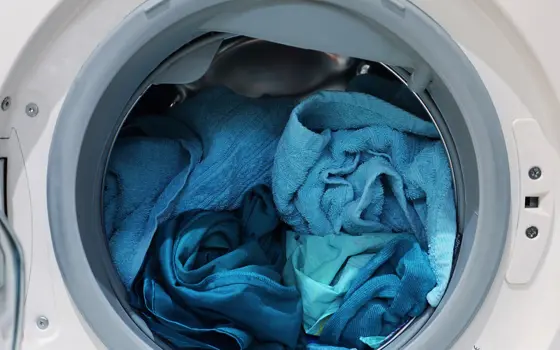
- Environment & sustainability
- Opinion
- Issue 91
Repair or replace – what drives a circular economy?
Right to repair legislation is being enacted around the world, designed to help governments achieve their net zero targets and meet obligations to reduce the environmental impact of waste. Paul Hide, CEO of AMDEA, sets out why sometimes the alternative might be a more sustainable approach.
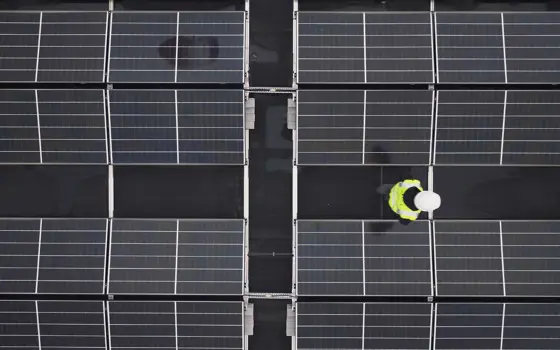
- Environment & sustainability
- Opinion
- Issue 89
A system is needed to deliver on COP26
Professor Sir Jim McDonald FREng FRSE, President of the Royal Academy of Engineering, reflects on his experience at COP26, hosted in his hometown of Glasgow, and outlines how engineers stand ready to deliver on the commitments made.
Quick read

- Chemical
- Environment & sustainability
- How does that work?
- Issue 88
Compostable plastics
Compostable plastics can be turned – alongside food and other organic waste – into compost. But how environmentally friendly are they really?

- Environment & sustainability
- Issue 88
Keeping carbon grounded
Agriculture started by trial and error but today, the fields we see are the result of an engineering system approach to manage fertility, crop production and, increasingly importantly, the carbon emissions and sequestration that are an inevitable part of the biosystem.
Quick read
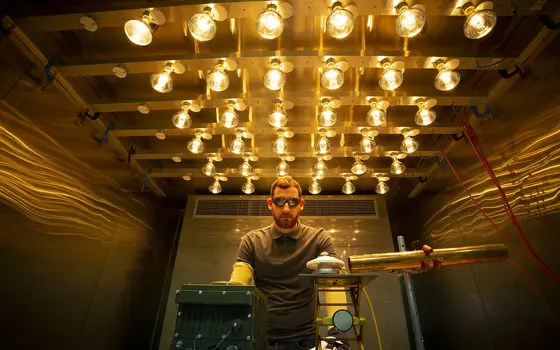
- Environment & sustainability
- Opinion
- Issue 88
Preparing future engineers for the net zero challenge
Engineers will face ever-growing and ever-changing challenges as they tackle climate change and build a sustainable future. There is now an urgent need to ensure they will be equipped with the knowledge and skills to do so, writes Professor Roger Kemp MBE FREng.

- Environment & sustainability
- Aerospace
- Issue 88
Towards zero carbon aviation
As with any energy-using industry, the aerospace industry shares the problem of eliminating carbon dioxide emissions by 2050, however they may find it the hardest of all. Val Miftakhov, Founder and CEO of California-based startup ZeroAvia discusses the first step on the road towards hydrogen-powered aircraft.
Quick read

- Environment & sustainability
- Food & agriculture
- Innovation Watch
- Issue 87
Edible packaging
Half of plastic packaging is used once and thrown away. Notpla has developed sustainably sourced seaweed packaging to hold liquids, which decomposes in less than six weeks.
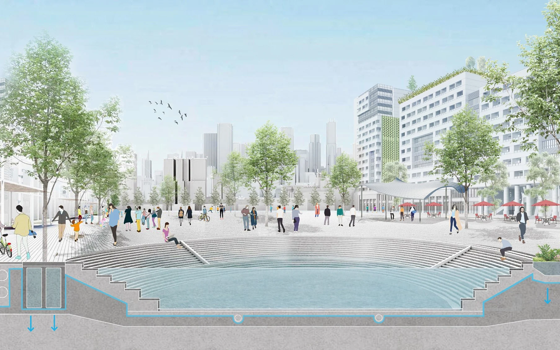
- Civil & structural
- Environment & sustainability
- Opinion
- Issue 87
Rethinking the future through design
Dr Mark Fletcher FREng, Global Water Business Leader at Arup, argues that engineers need to rethink design and embrace systems thinking now more than ever, to accelerate regenerative outcomes for people, places and the planet.

- Environment & sustainability
- Maritime & naval
- Profiles
- Issue 87
Sound moorings for a renewable career
For Dr RV Ahilan FREng, a career that started in offshore oil and gas has turned him into a champion for renewable energy. He used his knowledge of fluid mechanics and marine experience to push the commercialisation of offshore renewables.

- Environment & sustainability
- Issue 87
Nuclear designs on a low-carbon future
We must abandon fossil fuels as an energy source if we are to achieve the UK’s target of net zero by 2050. Low-carbon energy sources now provide less than 15% of the world’s energy. Paul Stein FREng and Sophie Macfarlane-Smith at Rolls-Royce explain how SMRs could help to achieve net zero.

- Environment & sustainability
- Maritime & naval
- Issue 86
Helping the green revolution
Hornsea One, the world’s largest offshore wind farm can generate enough electricity to supply over one million UK homes and led to the construction of Hornsea Two. Ørsted engineers faced substantial challenges in creating the record-breaking offshore wind farm.
Quick read

- Environment & sustainability
- Arts & culture
- Innovation Watch
- Issue 86
From food waste to fashion
Chip[s] Board is turning potato peel into sustainable bioplastics for the fashion and interior design industries to simultaneously tackle the problems of food waste and plastic pollution.

- Environment & sustainability
- Issue 86
Lessons from the field
Many young engineers spend time working with communities and engineers in other countries to help develop their skills at the start of their careers. Abigail Beall talked to three engineers about the impact working abroad has had on their career paths and outlooks, gaining valuable experience that they couldn’t have gained in the UK.

- Environment & sustainability
- Issue 86
Life after landfills
UK households produce over 25 million tonnes of waste a year, around 400 kilograms per person (roughly equivalent to four giant pandas). Around 45% of this is recycled, but what happens to the waste that can neither be recycled nor reused? Dominic Joyeux discovered how waste going to landfill is contributing to the circular economy.

- Environment & sustainability
- Electricals & electronics
- Issue 85
Charging into the future
The all-electric Jaguar I-PACE has collected many awards since it first left car showrooms in 2018, including its engineering team being recognised as MacRobert Award finalists. Find out about the challenges of developing the company's fist electric vehicle.

- Environment & sustainability
- Issue 85
Cleaning wastewater with algae
When a toilet is flushed, bath emptied or washing machine finishes, that wastewater needs to be treated and discharged safely into the environment. Industrial Phycology have developed a technique to use algae for purification.

- Environment & sustainability
- Mechanical
- Issue 84
Groundbreaking digging
The world’s first electric mini digger showcases a leap towards fossil fuel-free construction machinery. JCB's Chief Innovation and Growth Officer Tim Burnhope FREng and Director of Advanced Engineering Bob Womersley speak about the engineering behind this award-winning achievement.
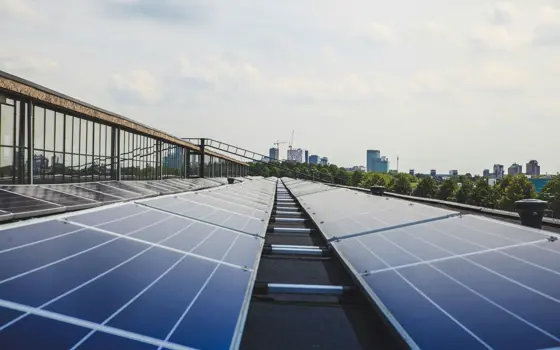
- Environment & sustainability
- Opinion
- Issue 83
Net zero - aspiration or reality?
Professor Sir Ian Boyd, Chairman at the UK research Integrity Office, contemplates the accountability and collective actions that are actually needed to make the transition for net zero carbon emissions by 2050 a reality and warns against efforts underpinned by short-term interests.
Quick read
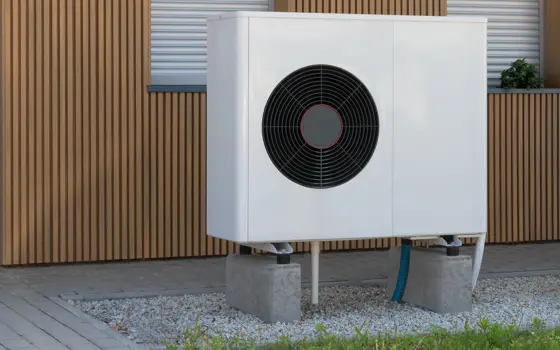
- Energy
- Environment & sustainability
- How does that work?
- Issue 82
Ground source heat pumps
Ground source heat pumps (GSHPs) have been used for many years in North America, Sweden and Germany. These geothermal systems harness natural heat from underground to provide heating for buildings. Now they are being increasingly deployed in homes and commercial buildings in the UK.

- Electricals & electronics
- Environment & sustainability
- Profiles
- Issue 82
Life in electrifying times
Professor Sir Jim McDonald FREng FRSE, elected President of the Royal Academy of Engineering, has worked as a transmission and distribution engineer. He joined the academic world when the electric industry was going through a business and technology revolution, becoming immersed in sustainable energy policy issues.

- Civil & structural
- Environment & sustainability
- Profiles
- Issue 80
Structures for a sustainable society
The growth of megacities and factors such as climate change have changed the nature of the challenges engineers face. Jo da Silva OBE FREng warns of the growing need to consider the resilience of the infrastructure that sustains cities and their inhabitants.
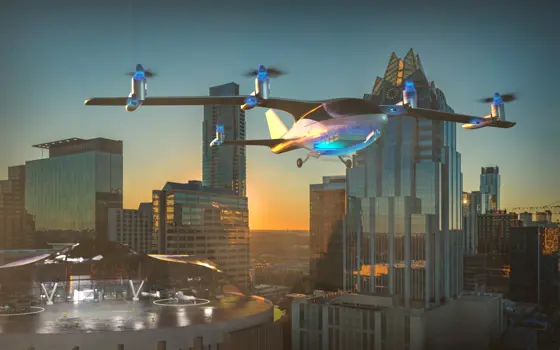
- Aerospace
- Environment & sustainability
- Opinion
- Issue 79
Can electrification solve aviation’s emissions problem?
Paul Stein FREng, Chief Technology Officer at Rolls-Royce, sets out why the industry and policymakers should be looking at electrification to address the challenges of the aviation industry's green credentials among a growing population experiencing decreasing costs of air travel.
Quick read

- Environment & sustainability
- How I got here
- Issue 78
Q&A: Dr Anh Tran
Dr Anh Tran is a humanitarian engineering researcher and lecturer at Coventry University. Her research focuses on energy, water, food, and computer technologies with resource-limited communities.

- Environment & sustainability
- Maritime & naval
- Issue 76
A great British polar explorer
The rapid melting of polar ice caps could have catastrophic consequences for oceans across the globe. To understand the role that the polar oceans play in our changing world, Britain is debuting the RRS Sir David Attenborough – one of the most advanced polar research vessels in the world.

- Environment & sustainability
- Issue 75
Processing the plastic problem
Plastic waste is an increasing global problem. While efforts are being made to encourage recycling and less usage, plastics – especially those that are hard to recycle – are still causing pollution. Recycling Technologies is using a chemical process to create a high-value product from plastic waste.
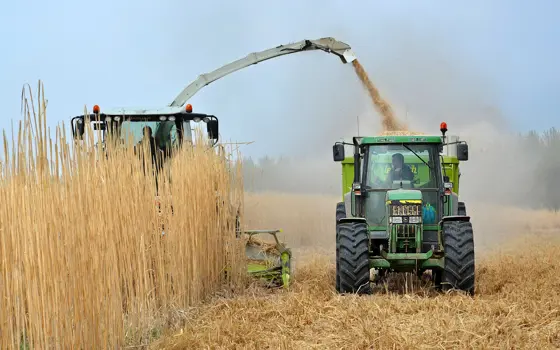
- Environment & sustainability
- Food & agriculture
- Opinion
- Issue 72
What role for biofuels in low-carbon UK transport?
Biofuels have a role to play in meeting the UK’s climate change commitments. Sustainable Chemical Engineering Professor Adisa Azapagic FREng sets out why biofuels made from wastes and by-products in different sectors are particularly important to these efforts.

- Design & manufacturing
- Environment & sustainability
- Issue 70
Future-proofing the next generation of wind turbine blades
Before deploying new equipment in an offshore environment, testing is vital and can reduce the time and cost of manufacturing longer blades. Replicating the harsh conditions within the confines of a test hall requires access to specialist, purpose-built facilities.

- Materials
- Environment & sustainability
- Profiles
- Issue 70
Forging links between academia and industry
For Julia King, Baroness Brown of Cambridge DBE FREng, materials science has been a common theme in a career that has taken in the academic world at all levels, to becoming a vice-chancellor, along with time in the higher echelons of corporate engineering at Rolls-Roce.

- Environment & sustainability
- Maritime & naval
- Innovation Watch
- Issue 69
An appetite for oil
The Gobbler boat’s compact and lightweight dimensions coupled with complex oil-skimming technology provide a safer and more effective way of containing and cleaning up oil spills, both in harbour and at sea.

- Civil & structural
- Environment & sustainability
- Opinion
- Issue 65
Upgrade existing buildings to reduce emissions
Much of the UK’s existing buildings predate modern energy standards. Patrick Bellew of Atelier Ten, a company that pioneered environmental innovations, suggests that a National Infrastructure Project is needed to tackle waste and inefficiency.

- Materials
- Environment & sustainability
- Issue 62
Recycling household waste
The percentage of waste recycled in the UK has risen rapidly over the past 20 years, thanks to breakthroughs in the way waste is processed. Find out about what happens to household waste and recent technological developments in the UK.

- Environment & sustainability
- Issue 24
The extreme engineering behind life on an Antarctic station
Antarctica is one of the most challenging environments on the planet, but of enormous scientific importance to humanity. Technology and engineering is essential to enable the British Antarctic Survey's researchers to pursue their science effectively in this awe-inspiring landscape.